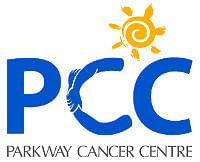
It could be a cough that never seems to disappear, shortness of breath, or a constant pain in the chest.
Or, you find yourself coughing up blood or constantly suffering from lung infections such as pneumonia.
If you encounter these symptoms, you might want to see your doctor - these are some stories that lung cancer patients have told about how they were diagnosed.
The second most common cancer in men and third most common in women in Singapore, lung cancer comes from the tissues of the lung, usually from cells lining the air passages.
According to the Singapore Cancer Society, it accounted for 15 per cent of all cancers in men and 7.5 per cent in women over the past five years.
There are two main types: Non-small cell lung cancer (NSCLC) and small cell lung cancer (SCLC), which is even more aggressive.
NSCLC is the more common type of lung cancer and accounts for more than four in five cases. It has sub-types, including adenocarcinoma and squamous cell carcinoma. If this form of lung cancer is discovered early, it can be treated with surgery and/or radiation therapy and chemotherapy.
SCLC can be treated with radiation therapy and chemotherapy if diagnosed early. However, it is often diagnosed only at an advanced stage.
Causes
One of the main causes of lung cancer is tobacco smoke. This accounts for more than 80 per cent of all lung cancer cases, and is the result of smoking - cigarettes, pipes or cigars, or second-hand smoke.
Tobacco smoke damages the cells of the lung, and over time, they can become cancerous.
Other causes of lung cancer include radon, a radioactive gas, as well as industrial dust such as asbestos.
If you have a family member with lung cancer, you may have a slightly higher risk. The cancer is also more prevalent among people who are 65 years old or older. Men also have three times more risk of being diagnosed with lung cancer than women.
Symptoms
Unfortunately, there may be few symptoms when lung cancer first develops. As it grows, however, more symptoms may emerge. Look out for:
- A cough that does not go away, or gets worse over time
- Trouble with breathing, shortness of breath
- Constant pain in your chest
- Coughing up blood
- A hoarse voice
- Frequent lung infections such as pneumonia
- Feeling tired all the time
- Loss of weight that you cannot account for
Having these symptoms does not necessarily mean that you have lung cancer; they may be a result of other health problems unrelated to cancer. If you have such symptoms, you should see a doctor to get the appropriate treatment.
Diagnosis
In a patient suspected to have lung cancer, the next steps may include tests of sputum, chest X-rays, CT scans, or more invasive tests to check for the presence of cancer.
Some of the tests may involve some measure of risk, so it is advisable to discuss the process with your doctor. The tests include:
- Sputum cytology: Samples of sputum from the lungs are checked for cancer cells.
- Thoracentesis: A needle is used to remove pleural fluid from the chest.
- Bronchoscopy: A bronchoscope (a thin, flexible lighted tube) is inserted into the lung through the nose or mouth, and samples of the cells are taken.
- Fine-needle aspiration: A thin needle is used to remove tissue or fluid from the lung or lymph node.
- Open biopsy: An incision in the chest wall is made to get samples from the lung or lymph nodes. This is done when the tumour tissue is difficult to obtain.
-
What to look out for
-
When lung cancer first develops, there may be few symptoms. But as it grows, more symptoms may emerge.
- A cough that does not go away, or gets worse over time
- Trouble with breathing, shortness of breath
- Constant pain in your chest
- Coughing up your blood
- A hoarse voice
Treatment
As lung cancer tends to spread to the lymph nodes, brain, bones, liver, and adrenal glands, the doctors will first need to find out the type and stage of lung cancer, whether it has spread, and if so, where to.
The information will help them plan for treatment and determine whether the goals are to cure; to control the disease so a patient will live longer; or to primarily manage the symptoms and prevent complications to improve quality of life. Common methods include:
- Surgery: Tissues containing the tumour are removed. This is typically in patients whose lung cancer can be completely removed by surgery.
- Radiation therapy: High-energy rays are used to kill cancer cells.
- Chemotherapy: Anti-cancer drugs are administered to shrink or kill cancer cells. This can affect cancer cells all over the body, as the drugs are administered into the bloodstream.
- Targeted therapy: Drugs are administered to block the growth and spread of cancer cells. Like chemotherapy, they enter the bloodstream and can affect cancer cells all over the body. Targeted therapy has been done for some people with NSCLC, where their cancer cells have a special mutation which the drug can target.
